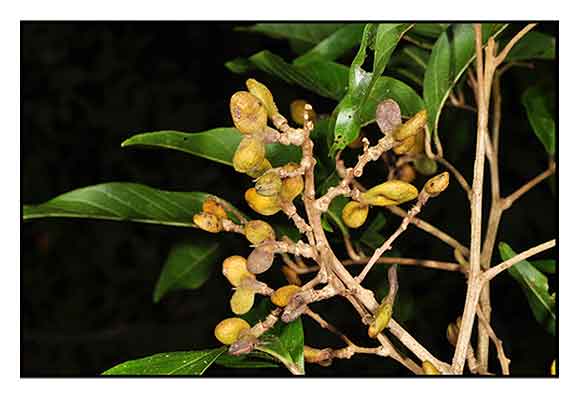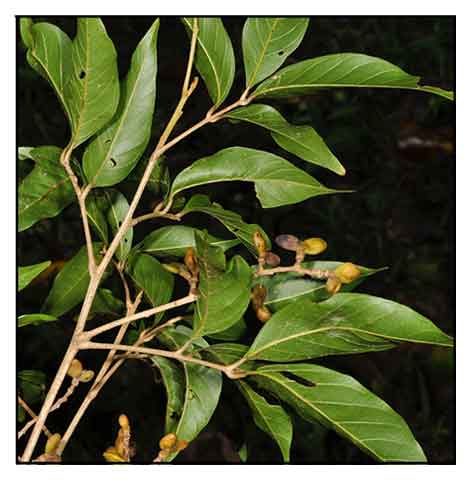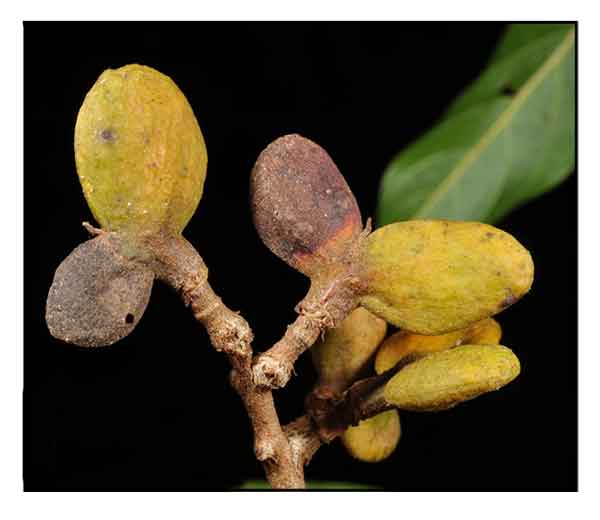
Family • Sapindaceae
Alasan
Arytera litoralis Blume
SEASHORE SOAPBERRY
Bin mu huan
| Scientific names | Common names |
| Arytera angustifolia Radlk. | Alasan (Tag.) |
| Arytera geminata (K.Schum. & Lauterb.) Radlk. | Magabagaba (Tag.) |
| Arytera gigantosperma Radlk. | Seashore soapberry (Engl.) |
| Arytera litoralis Blume | |
| Arytera litoralis f. angustifolia (Radlk.) Radlk. | |
| Arytera litoralis f. major (King) Radlk. | |
| Arytera litoralis var. major King | |
| Arytera rufescens (Turcz.) Radlk. | |
| Arytera xerocarpa (Blume) Ade;b. | |
| Cupania adenophylla Planch. ex Hiern | |
| Euphoria xerocarpa Blume | |
| Guioa geminata K.Schum. & Lauterb. | |
| Ratonia adenophylla Kurz | |
| Ratonia litoralis (Blume) Teijsm. & Binn. | |
| Ratonia rufescens (Turcz.) Fern.-Vill. | |
| Ratonia zygolepis Turcz. | |
| Sapindus adenophyllus Wall. | |
| Zygolepis rufescens Turcz. | |
| Arytera litoralis Blume is an accepted species. KEW: Plants of the World Online | |
| Other vernacular names |
| CHINA: Bin mu huan. |
| INDONESIA: Kaya sampi, Ki lalayu, Penjalinan. |
| MALAYSIA: Bedara emping, Kelayu hitam, Tampong kechil, Gerik, Berak busa. |
| MYANMAR: La-Mu. |
| THAILAND: Seefan, Sifan, Taet ling, Ka-lue-pa-ya-mo, Kho kan, Si puk dong. |
| VIETNAM: Truong nguan, Qua doi, Chom chom rung, Truong duyen hai. |
| OTHERS: Ampungit (Murut), Anging manuk (Kadazan), Nunuk-nunuk, Petinag (Sabah). |
Updated December 2023
December 2022
![]()
 |
| PHOTOS / ILLUSTRATIONS |
| IMAGE SOURCE: Photo: Sapindaceae -- Arytera litoralis : fruiting twig / Copyright © 2016 by P B Pelser & J F Barcelona (contact: [email protected])) [ref. DOL110338] / Non-Commercial Use / click on image to go to source page / Phytoimages.siu.edu |
| OTHER IMAGE SOURCE: Photo: Sapindaceae -- Arytera litoralis : leaves, twigs, fruits / Copyright © 2016 by P B Pelser & J F Barcelona (contact: [email protected])) [ref. DOL110362] / Non-Commercial Use / click on image to go to source page / Phytoimages.siu.edu |
| OTHER IMAGE SOURCE: Photo: Sapindaceae -- Arytera litoralis : fruits / Copyright © 2016 by P B Pelser & J F Barcelona (contact: [email protected])) [ref. DOL110348] / Non-Commercial Use / click on image to go to source page / Phytoimages.siu.edu |
Additional
Sources and Suggested Readings |
• |
DOI: It is not uncommon for links on studies/sources to change. Copying and pasting the information on the search window or using the DOI (if available) will often redirect to the new link page. (Citing and Using a (DOI) Digital Object Identifier) |
| List of Understudied Philippine Medicinal Plants |
• |
 |




